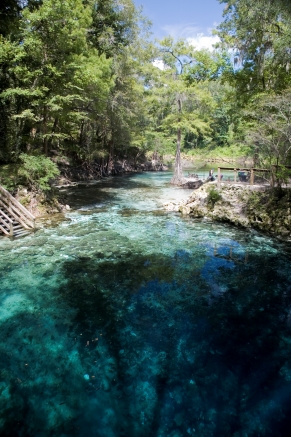The entire State of Florida and about one third of the United States is underlain by highly porous carbonate formations (karstic aquifers), characterized by conduits and other dissolution features and containing large quantities of fresh water. These ground water resources supply some 50% of the nation's and over 90% of Florida's need for drinking water. The generally high quality of ground water and its easy availability through private and public water supply wells has made it the most convenient and economical source of fresh water for domestic, industrial and agricultural uses. However, the physical location of aquifers beneath man-made development and activities, coupled with withdrawal of ground water in increasingly larger volumes to satisfy the growing demand, have resulted in pollution and depletion of the resources on local and regional scales. Ground-water quality deterioration and depletion of aquifers in Florida and elsewhere will impact not only the economy and the public but also the integrity of our ecosystems, since the ground water is highly interactive with wetlands and surface waters.

Effective management of our ground waters must be based on scientifically based models capable of evaluating and predicting their behavior accurately. However, the flow of water and transport of contaminants in karstic aquifers cannot be accurately quantified by the traditional hydrogeological equations, methods and tools. Consequently, findings and conclusions based on traditional approaches can be erroneous and misleading, and can result in the misuse of funds intended to protect this resource and its further degradation.

The purpose of the Karst Center is to facilitate the development and application of alternative approaches to quantification of flow and transport in karstic and multi-porosity aquifers. A group of scientists from academe, scientific and regulatory agencies and the private sector established what then became the Hydrogeology Consortium in 1997. The scientists who established the the Consortium were cognizant of the need of resource managers and elected officials to create a balance between economic growth and environmental conservation in their communities.
